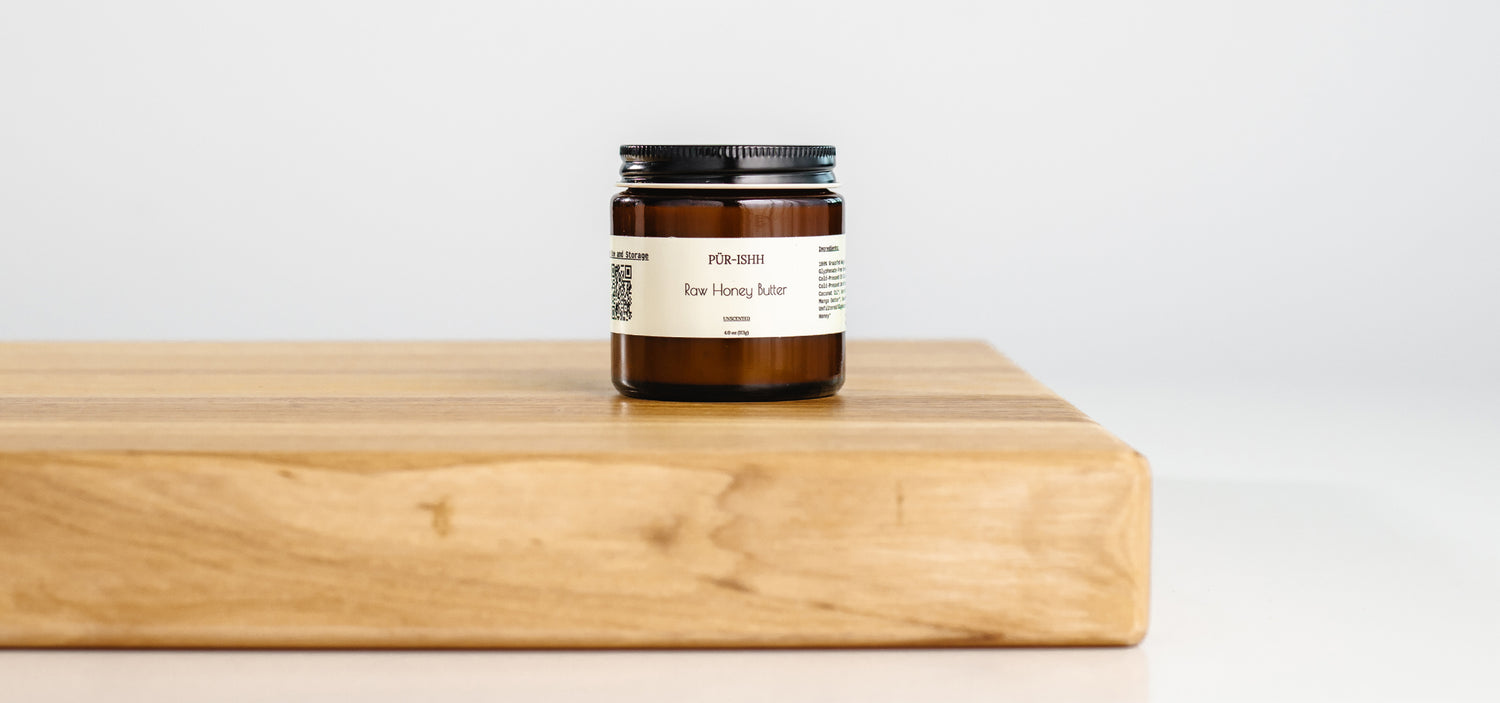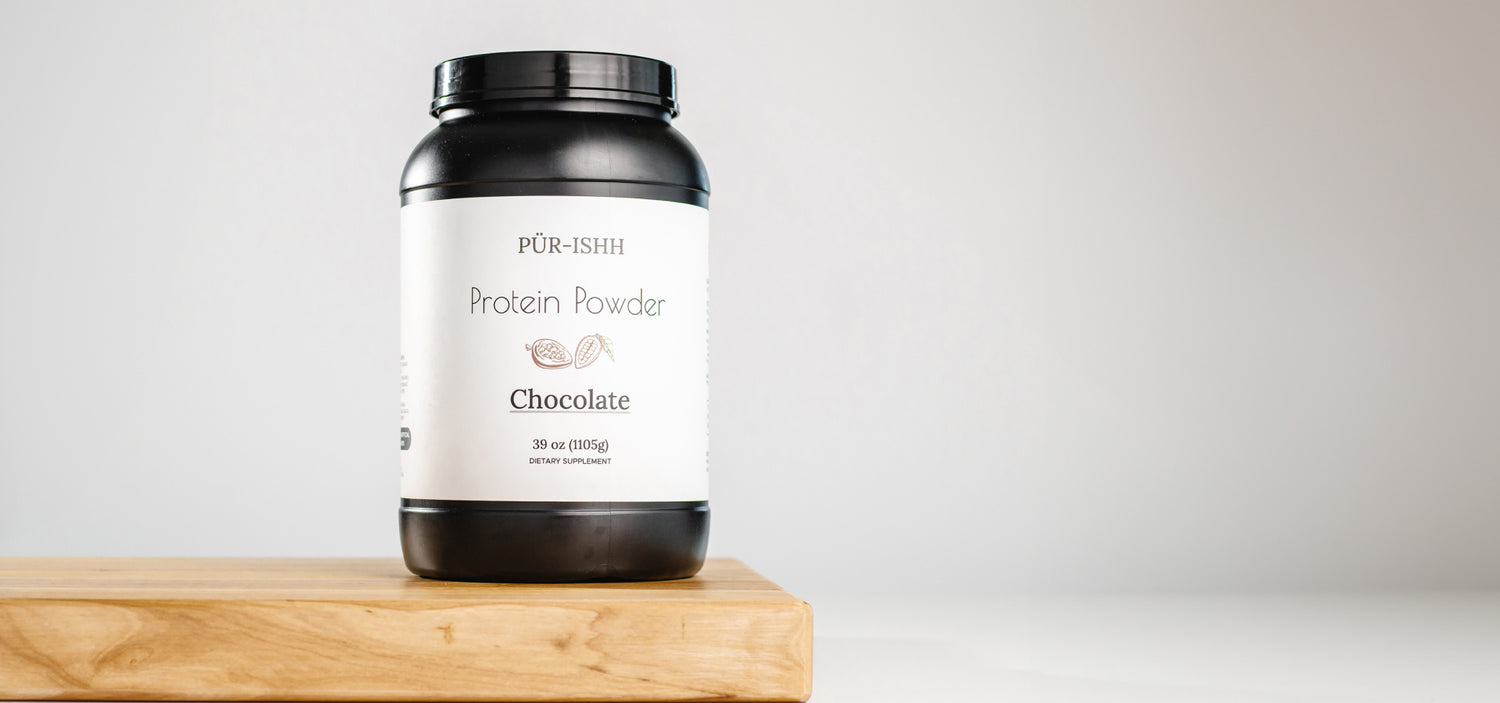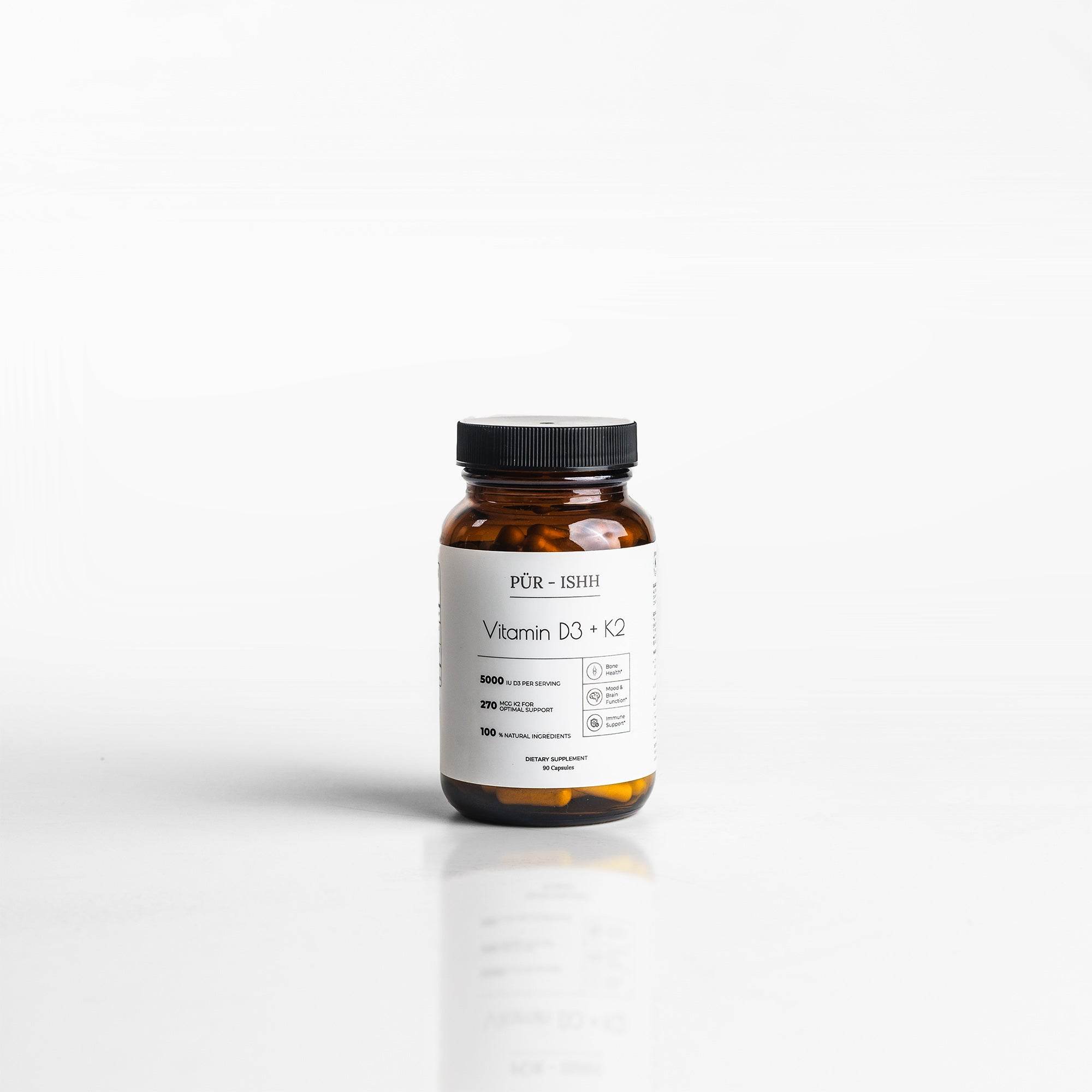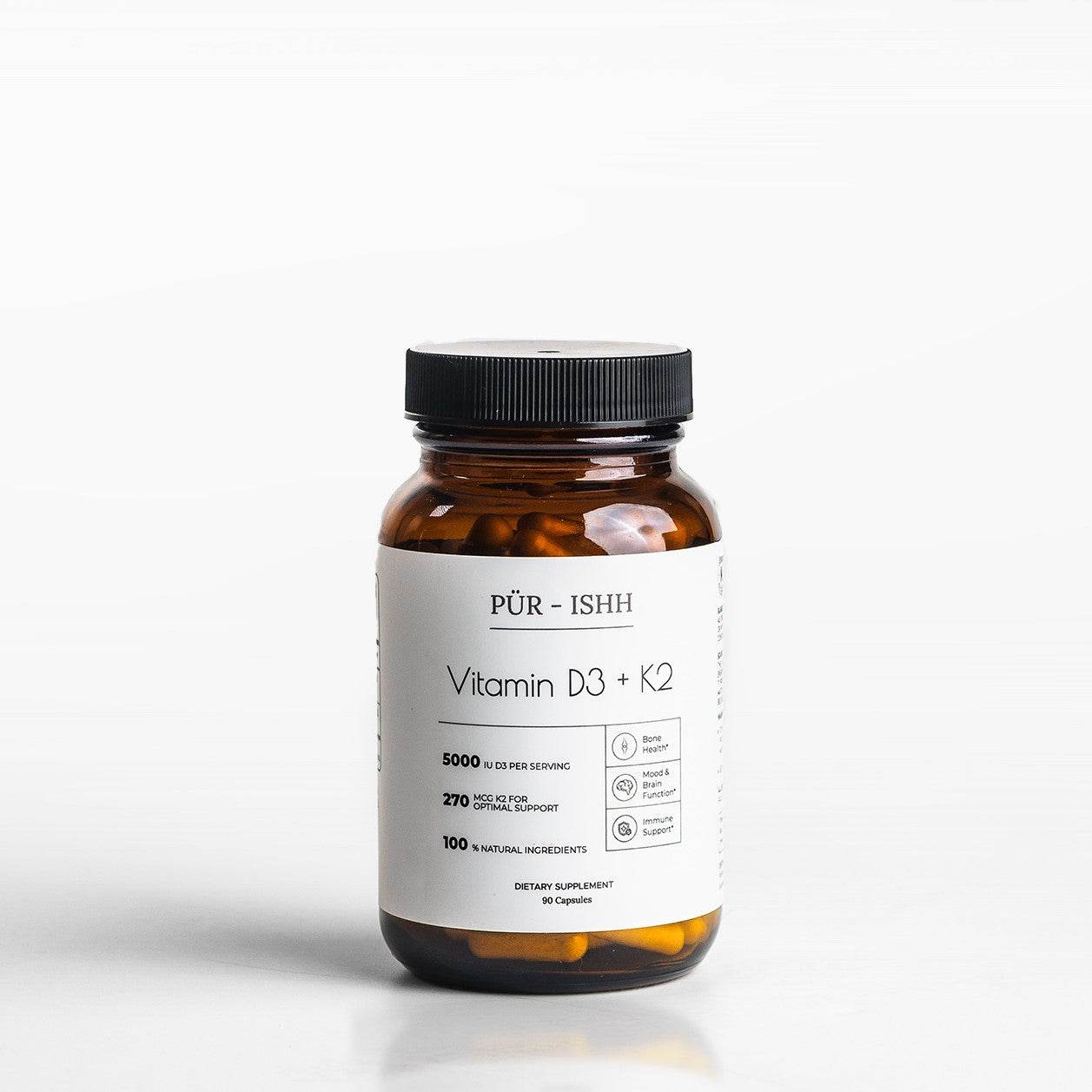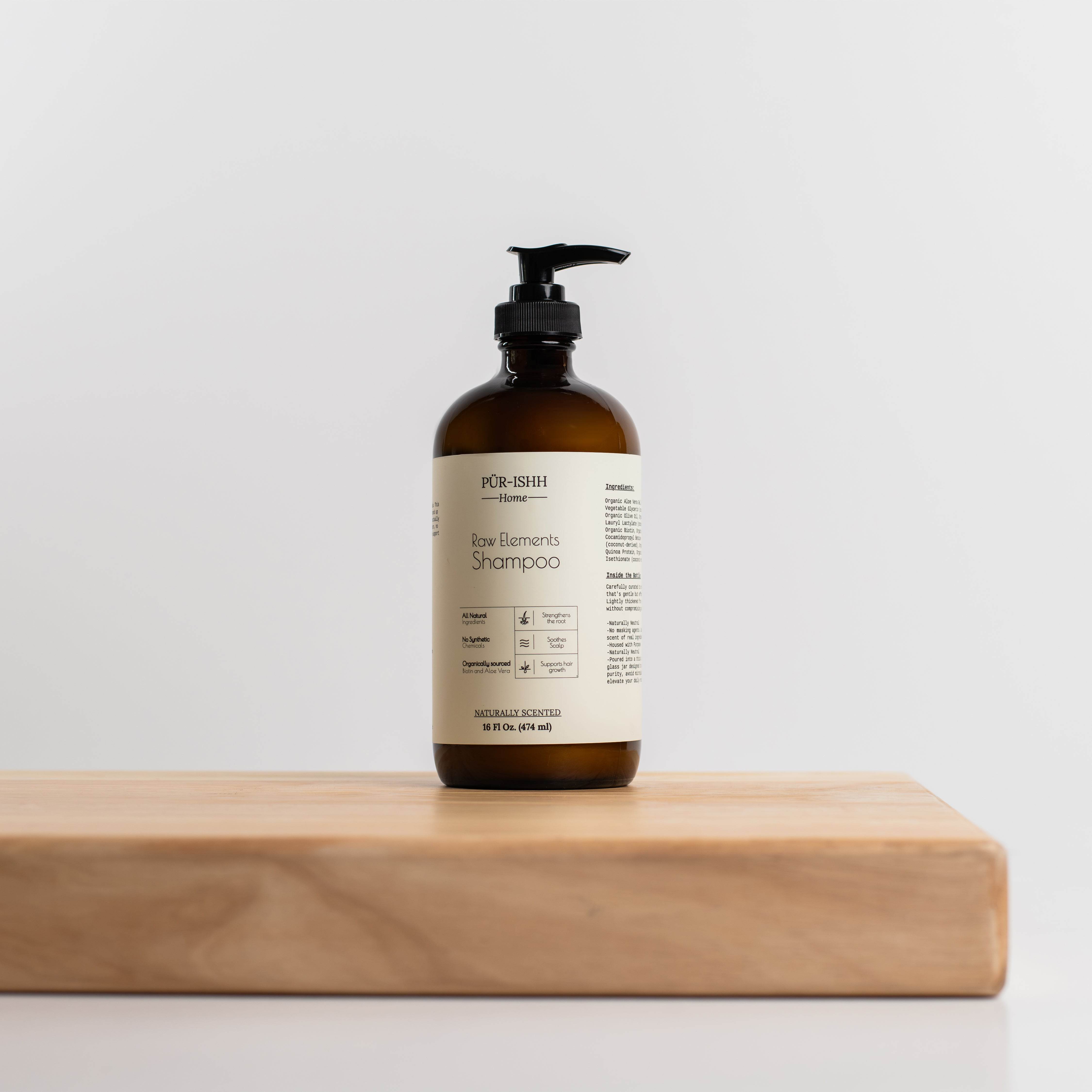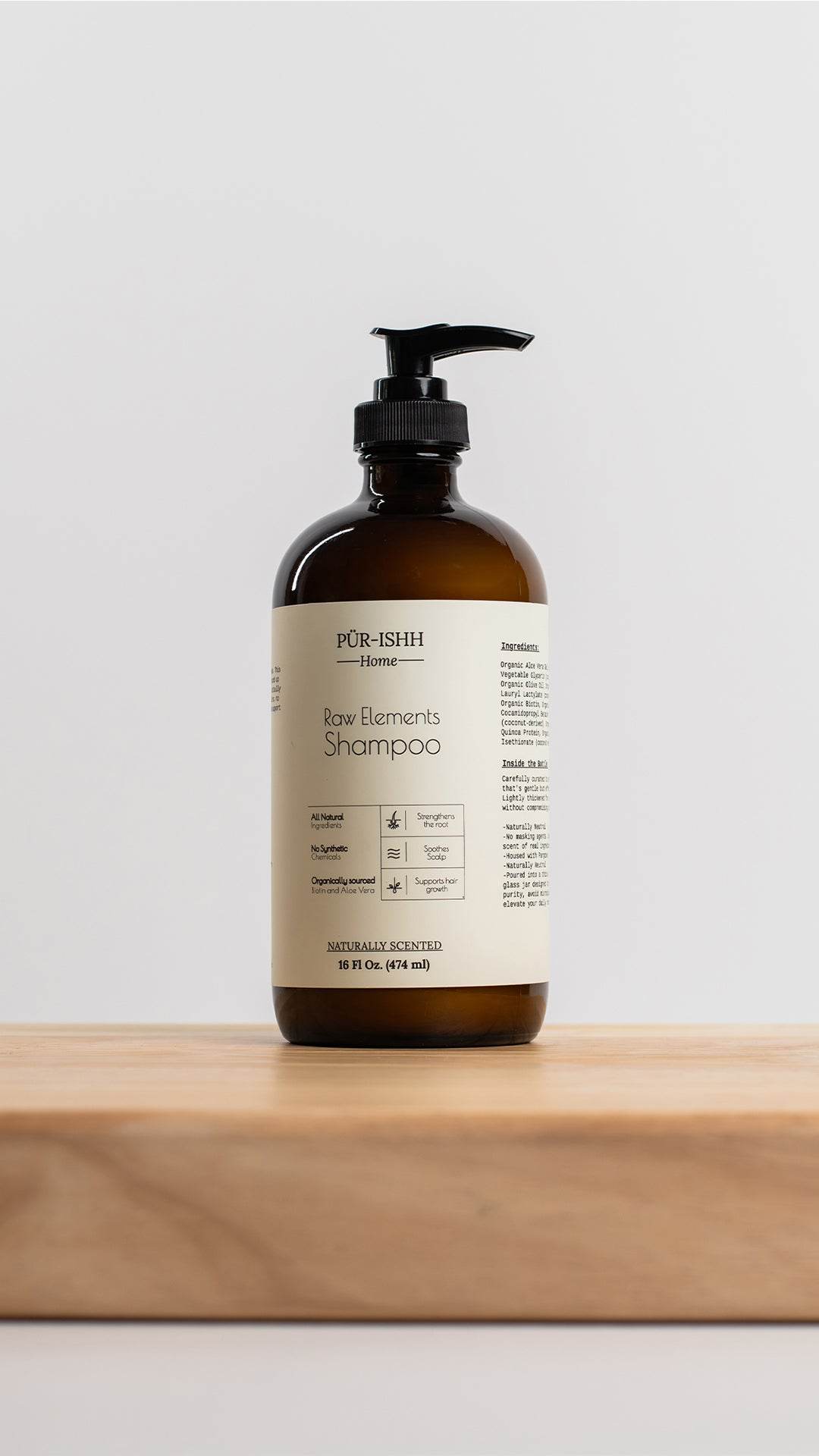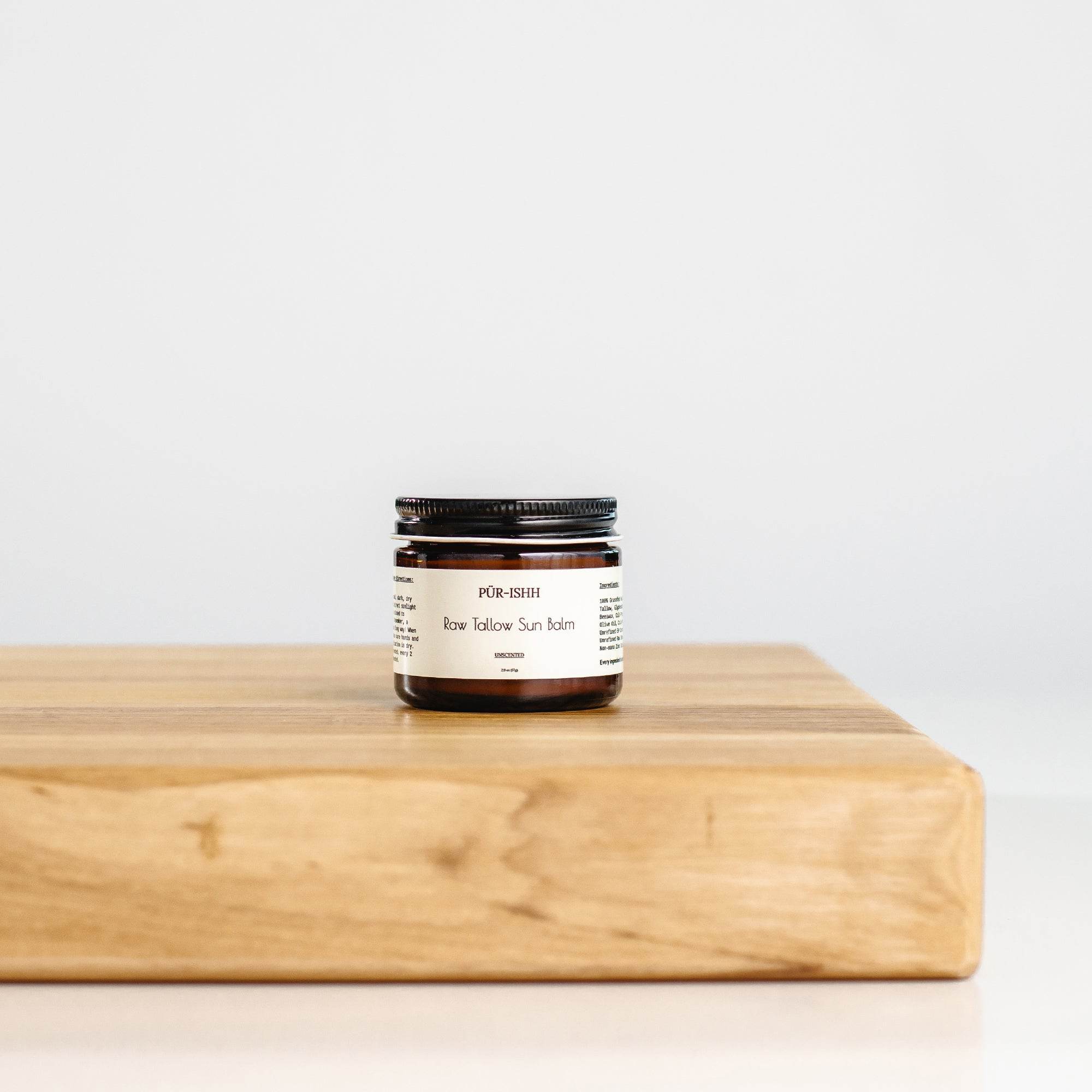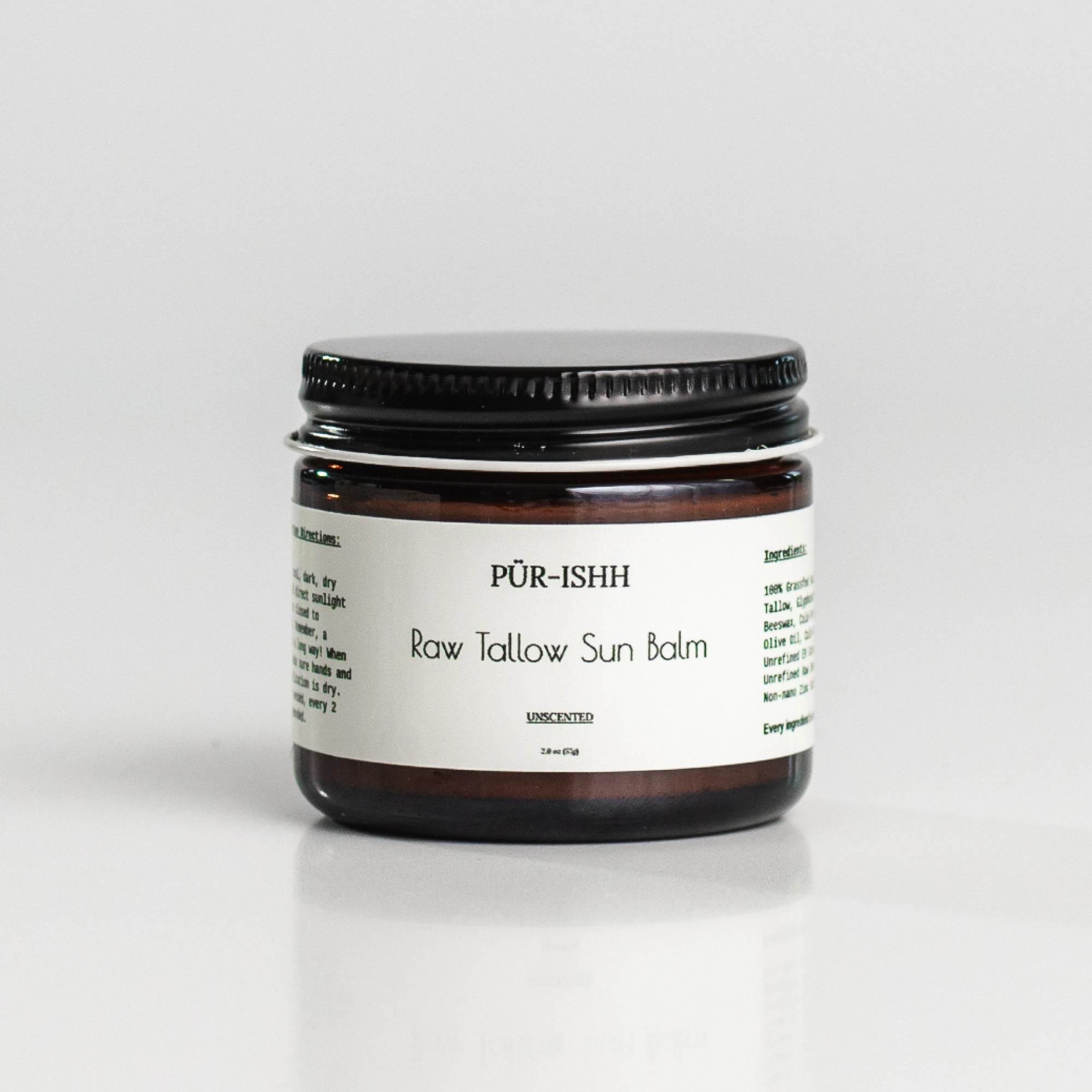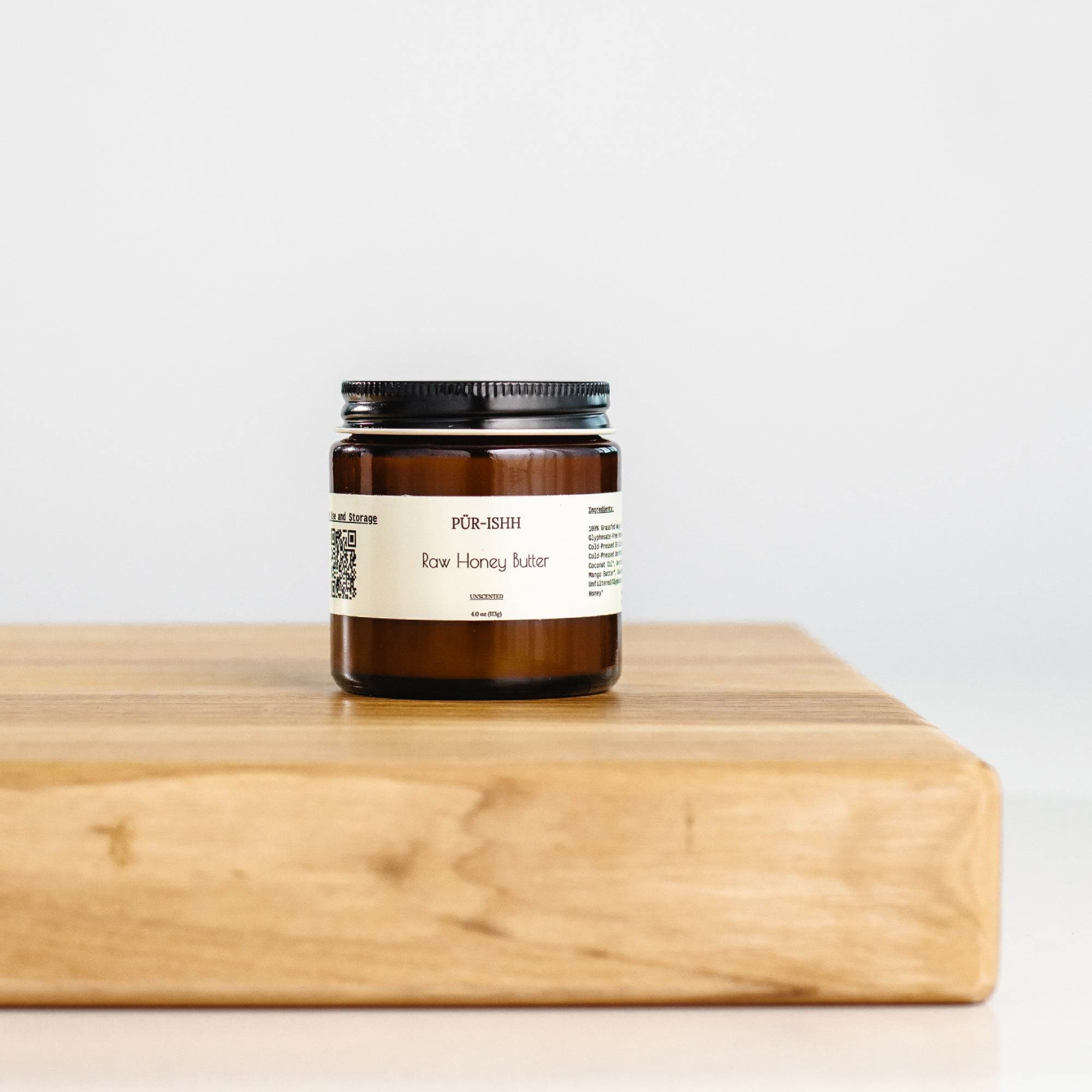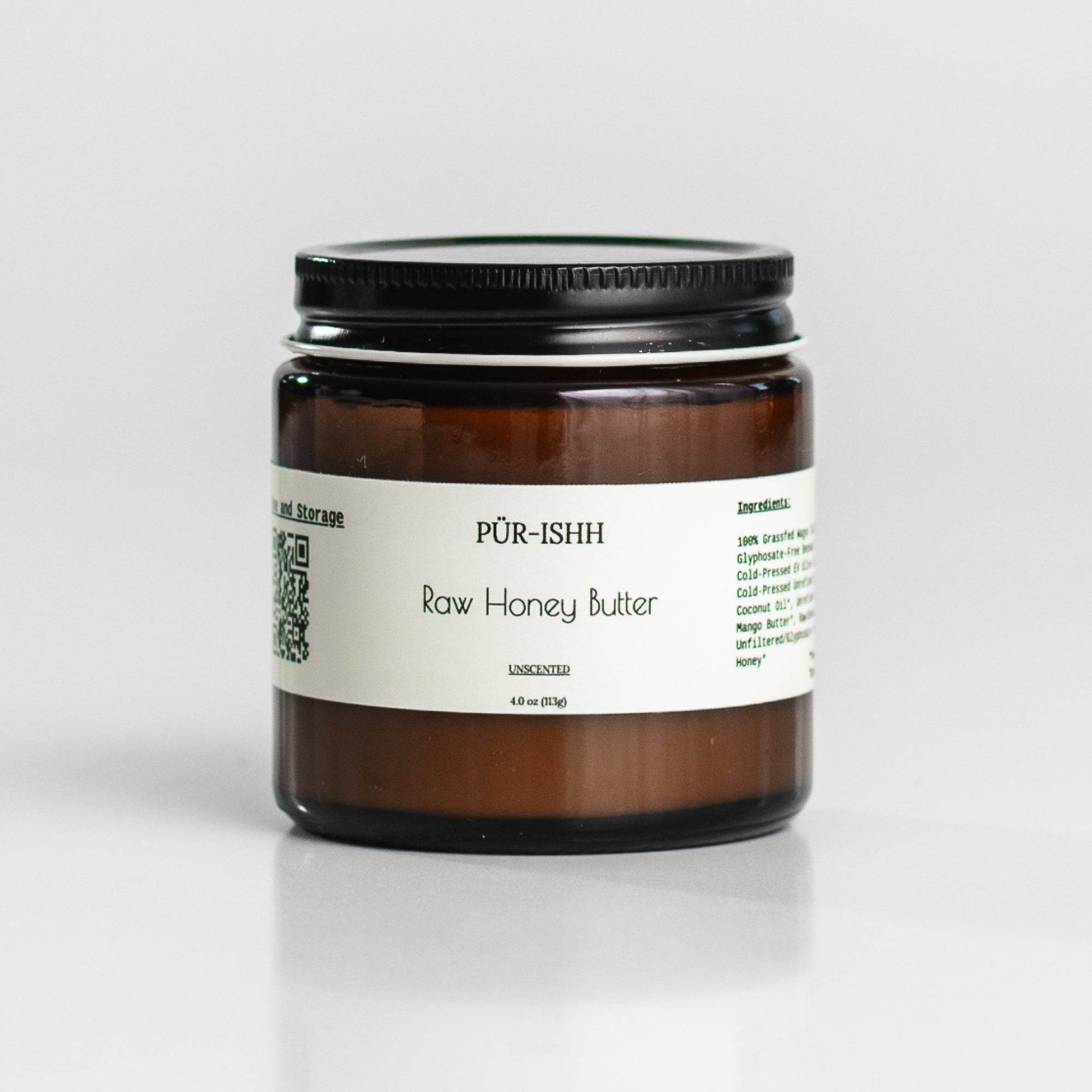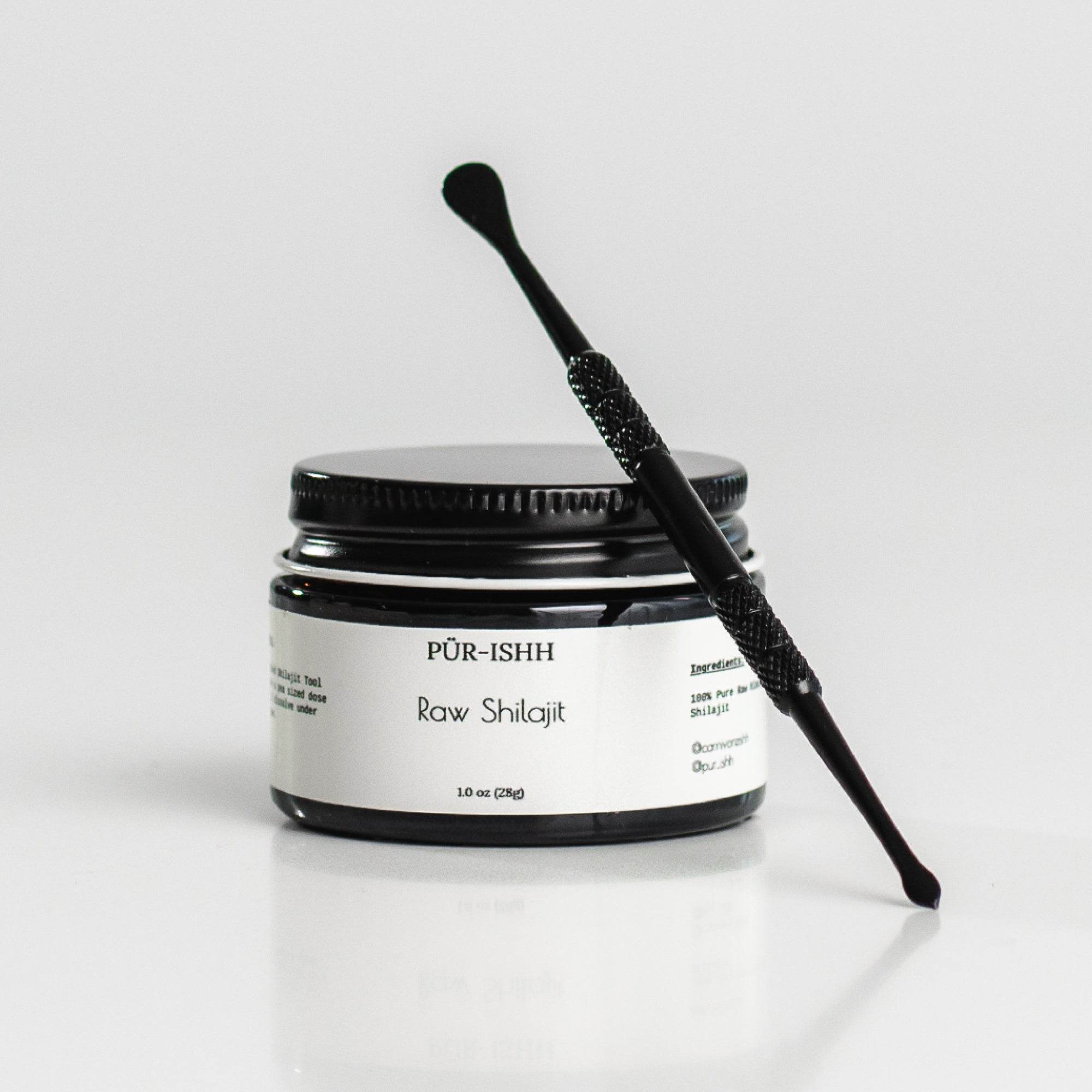Raw, Natural & Chemical‑Free Wellness

Pure ingredients
Raw ingredients. Ancient wisdom. Modern results. Every product contains only what nature intended:
- Grass-fed tallow rich in bioavailable nutrients
- Raw honey and adaptogenic herbs in their purest form
- Regeneratively sourced proteins, never denatured
- Zero synthetic additives or lab-made fillers
Small-batch wellness our ancestors would recognize. Because when you honor nature's integrity, your body knows the difference.












Purely Natural, Perfectly You
Let customers speak for us
Why Purishh?
Pure Ingredients
Handpicked and ethically sourced from trusted, natural farms.
Effective Results
Each product is designed to protect, nourish, and enhance your skin’s natural balance.
Holistic Wellness
Embrace a balanced lifestyle with supplements and creams that work in harmony with your body.

Frequently Asked Question
What makes Purishh products different from conventional supplements or skincare?
What makes Purishh products different from conventional supplements or skincare?
Purishh’s mission is to return to the raw, unprocessed power of nature. Every product is formulated with 100 % natural ingredients and no synthetic preservatives, fillers, or dyes. For example, the Raw Honey Butter contains whipped Wagyu beef tallow, cold‑pressed olive and coconut oils, mango butter, raw honey and beeswax – it moisturizes deeply and can even replace conventional lotion. The Raw Tallow Sunbalm uses grass‑fed tallow, non‑nano zinc oxide and organic oils to provide mineral sun protection while nourishing the skin. Purishh’s Protein Powder combines grass‑fed whey and hydrolyzed collagen with organic superfoods to deliver 26 g of easily digestible protein with zero added sugar. Across their range, Purishh keeps ingredient lists short and transparent, using only what is necessary to support health and well‑being.
Are Purishh’s ingredients ethically and sustainably sourced?
Are Purishh’s ingredients ethically and sustainably sourced?
Yes. The founders emphasize sustainable sourcing and ethical treatment of animals and land. Tallow for the skincare range is hand‑sourced from 100 % grass‑fed, Wagyu, halal cattle in New Zealand, ensuring humane slaughter and optimal nutrient quality. Olive and coconut oils are single‑origin, cold‑pressed. The whey in Purishh protein powder comes from grass‑fed cows raised without hormones or antibiotics, and the collagen is hydrolyzed for better absorption. These practices mean customers receive products that are both pure and sustainable.
Why does Purishh use beef tallow in its skincare products?
Why does Purishh use beef tallow in its skincare products?
Grass‑fed beef tallow is biocompatible with human skin; its fatty‑acid profile closely resembles natural sebum, so it’s absorbed efficiently. Properly rendered tallow is a vitamin powerhouse, naturally supplying vitamins A, D, E, and K that support cell turnover, immune function, and antioxidant protection. Tallow also contains oleic, stearic and palmitic acids that strengthen the skin’s barrier, calm inflammation and maintain moisture. Grass‑fed tallow offers a high concentration of conjugated linoleic acid (CLA), an anti‑inflammatory fatty acid. These nutrients collectively help Purishh’s Raw Honey Butter and Raw Tallow Sunbalm to moisturize, nourish and protect the skin without clogging pores or causing irritation.
How is Purishh protein powder different, and why is it easy to digest?
How is Purishh protein powder different, and why is it easy to digest?
Many conventional protein powders use cheap sources and add artificial thickeners or sweeteners that cause bloating and digestive discomfort. Purishh starts with grass‑fed whey processed via cold‑filtration, which preserves natural enzymes and bioactive peptides that aid digestion. It also adds hydrolyzed bovine collagen to support joints, skin and gut health. The powder uses organic monk fruit for sweetness and contains no carrageenan, gums, sucralose or artificial preservatives, so it mixes smoothly and is gentle on the stomach. Each serving provides 26 g of complete protein with only 1 g of fat and zero sugar, making it suitable for keto, gluten‑free and non‑GMO diets.
What are Purishh Electrolytes, and how do they support hydration?
What are Purishh Electrolytes, and how do they support hydration?
Purishh’s Electrolytes formula offers clean hydration without the artificial colors and preservatives found in many sports drinks. Each serving includes over 800 mg of unrefined Himalayan salt, providing sodium and trace minerals, plus magnesium malate and potassium chloride. Organic fruit powders (raspberry or lemon‑lime) and monk fruit sweetener give a natural flavor without sugar. The formula helps replenish electrolytes lost through exercise, supports muscle function, and is keto‑friendly.
What is Raw Shilajit, and how should it be used?
What is Raw Shilajit, and how should it be used?
Raw Shilajit is a resin harvested from high‑altitude Himalayan rocks. It forms from decomposed plant material and is rich in minerals and fulvic acid. Traditionally used as an adaptogen, Shilajit helps boost energy, improve stamina and support overall health. Purishh provides 100 % pure Himalayan shilajit. Users typically dissolve a pea‑sized amount in warm water, tea or milk. Due to its potent minerals, start with a small dose and consult a healthcare professional if you have existing medical conditions.
What is the Ishh Leaky Gut Protocol?
What is the Ishh Leaky Gut Protocol?
The Ishh Leaky Gut Protocol is a step‑by‑step program designed to help restore gut health naturally. It includes dietary recommendations, lifestyle tips and natural supplements to support the intestinal lining. The protocol focuses on removing irritants, replenishing beneficial bacteria and repairing the gut barrier. It is not a medical treatment, so customers with chronic digestive issues should consult a healthcare professional before starting.
How should I store Purishh products?
How should I store Purishh products?
Store supplements and protein powders in a cool, dry place away from direct sunlight. Skincare products like Raw Honey Butter and Raw Tallow Sunbalm are natural and free from artificial stabilizers; keeping them at room temperature helps maintain texture. If you live in a hot climate, refrigerating tallow‑based balms can prevent melting. Always use clean hands or a spatula to avoid introducing bacteria.
When will my order ship, and how long will delivery take?
When will my order ship, and how long will delivery take?
Purishh asks customers to allow 2–3 business days for processing and production before an order ships. Once dispatched, average transit times are 7–10 business days; however, natural disasters, holidays and weather can cause delays. Free standard shipping is offered on orders over US$150 (or equivalent), and shipping costs for smaller orders are calculated at checkout. Purishh cannot guarantee exact delivery dates because delivery is ultimately the responsibility of the shipping carrier.
Can I subscribe and save on regular purchases?
Can I subscribe and save on regular purchases?
Yes. Purishh offers a subscription program for products like protein powder. Subscribing gives 10 % off the regular price, and you can choose delivery intervals (e.g., monthly). Subscriptions auto‑renew, but you may skip or cancel at any time through your account.
Are Purishh products allergen‑free or suitable for special diets?
Are Purishh products allergen‑free or suitable for special diets?
Purishh formulates products without common synthetic additives, but some items may contain potential allergens. The protein powder contains whey (a dairy product) and collagen derived from bovine sources; it is unsuitable for vegans or those with dairy allergies. The Electrolytes formula is gluten‑free, sugar‑free and keto‑friendly. Always review ingredient lists carefully and consult your healthcare provider if you have specific allergies or dietary restrictions.
Where are Purishh products made?
Where are Purishh products made?
Purishh sources ingredients globally, such as New Zealand Wagyu tallow and Himalayan shilajit, but manufactures products in small batches under rigorous quality control. By keeping production small and hands‑on, Purishh can maintain freshness and ensure every batch meets the highest standards.
Pür Insights
Skin Dehydration: How Electrolytes Improve Glow from the Inside Out
You've probably invested in serums, moisturizers, and facial oils trying to achieve that elusive healthy glow. But what if the secret to radiant skin isn't in your bathroom cabinet, but in your hydration habits? Skin dehydration is one of the most overlooked causes of dullness, fine lines, and lackluster complexion, and electrolytes play a surprising role in fixing it from within. Understanding Skin Dehydration vs. Dry Skin First, let's clear up a common confusion. Dehydrated skin and dry skin aren't the same thing, though they often get lumped together. Dry skin is a skin type characterized by low oil production. It's genetic and stays relatively consistent throughout your life. Dehydrated skin, on the other hand, is a condition caused by lack of water in the skin cells. Even oily skin types can experience dehydration. The telltale signs of dehydrated skin include: Dullness and lack of radiance Increased appearance of fine lines and wrinkles Tight, uncomfortable feeling Darker under-eye circles Increased sensitivity and irritation Flaky patches despite using moisturizer When your skin is dehydrated, it loses plumpness and elasticity. This makes every imperfection more visible and gives your complexion that tired, aged look that no amount of makeup can fully correct. The Water-Skin Connection Your skin is approximately 64% water, making it one of the most water-dependent organs in your body. Water serves multiple critical functions for skin health: It maintains cell structure and plumpness. When cells are well-hydrated, they're full and firm, creating smooth, supple skin. Dehydrated cells collapse slightly, leading to wrinkles and sagging. Water supports nutrient delivery and waste removal. Your blood carries nutrients to skin cells and removes metabolic waste. Without adequate hydration, this system becomes sluggish, leaving your skin starved and congested. Proper hydration enables skin barrier function. Your outermost skin layer needs water to produce the lipids and proteins that form a protective barrier. When dehydrated, this barrier weakens, leading to increased sensitivity and moisture loss. Why Water Alone Isn't Enough Here's where most people go wrong: they drink more water expecting immediate skin improvement, but they don't see the results they hoped for. That's because drinking plain water only solves part of the equation. Your body needs to actually absorb and retain that water for it to reach your skin cells. This is where electrolytes become essential. Electrolytes are minerals that carry electrical charges and regulate fluid balance throughout your body. The primary electrolytes include sodium, potassium, magnesium, and calcium. When you drink water without adequate electrolytes, much of it passes through your system without being properly absorbed into cells. It's like trying to fill a bucket with holes, the water goes in but doesn't stay where you need it. How Electrolytes Transform Hydration Electrolytes work through a process called osmosis, which regulates how water moves in and out of cells. Here's how each major electrolyte contributes to skin hydration: Sodium often gets a bad reputation, but it's crucial for maintaining fluid balance. Sodium helps your body retain the water you drink and directs it into cells rather than letting it flush through. The key is getting sodium from quality sources, unrefined sea salt contains trace minerals that support overall hydration. Potassium works in tandem with sodium to regulate cellular fluid balance. While sodium primarily manages fluid outside cells, potassium manages fluid inside cells. This balance is crucial for maintaining cell plumpness and function. When potassium levels are optimal, your cells can hold onto hydration effectively. Magnesium supports over 300 enzymatic reactions in your body, including those involved in maintaining skin barrier function and producing natural moisturizing factors. Magnesium deficiency is incredibly common and can manifest as dry, irritated skin that doesn't respond well to topical treatments. Calcium contributes to skin barrier integrity and helps regulate cell turnover. Proper calcium levels support the production of ceramides and other lipids that keep your skin barrier strong and moisture-sealed. The Gut-Skin-Hydration Axis There's another layer to this story that most people miss: your gut health directly impacts how well you absorb and utilize both water and electrolytes. A compromised gut lining can't effectively absorb nutrients and minerals, meaning even if you're drinking electrolyte-rich fluids, your body may not be getting the full benefit. Supporting gut health becomes essential for optimal hydration. When your digestive system functions properly, it efficiently absorbs the electrolytes and minerals your skin needs to maintain hydration from within. Many people notice that addressing gut issues leads to dramatic improvements in skin hydration and appearance, because they're finally absorbing the nutrients they've been consuming. Signs your gut needs attention often include skin problems that don't respond to topical treatments. Electrolytes and Skin Barrier Function Your skin's outermost layer, the stratum corneum—functions as a brick-and-mortar structure. The "bricks" are dead skin cells, and the "mortar" is a mixture of lipids, ceramides, and natural moisturizing factors. This barrier prevents water loss and protects against environmental damage. Electrolytes, particularly sodium and potassium, are crucial components of your skin's natural moisturizing factors. When electrolyte levels are balanced, your skin can produce adequate natural moisturizing factors to keep the barrier strong and hydrated. Magnesium specifically supports the production of ceramides, essential lipids that cement the barrier together. Without sufficient magnesium, your barrier becomes porous, allowing moisture to escape regardless of how much you drink or what you apply topically. Signs Your Skin Needs Electrolyte Support Beyond general dehydration signs, specific indicators suggest electrolyte imbalance is affecting your skin: You drink plenty of water but still have dry, dull skin. This suggests your body isn't retaining the water you're consuming, often due to inadequate electrolytes. Your skin looks worse despite increased water intake. Excessive plain water without electrolytes can actually dilute your body's mineral stores, worsening dehydration at the cellular level. You experience muscle cramps or fatigue alongside skin issues. These are classic signs of electrolyte imbalance that often manifest in your skin as well. Your skin barrier seems constantly compromised, sensitive, reactive, and unable to hold moisture no matter what products you use. Optimizing Electrolyte Intake for Skin Health Getting adequate electrolytes doesn't require complicated protocols. Here's how to support your skin from within: Choose Quality Electrolyte Sources: Not all electrolyte supplements are created equal. Many commercial sports drinks contain artificial sweeteners, synthetic colors, and minimal actual mineral content. Look for clean formulations with real minerals from unrefined sources. Quality electrolyte blends like those from Purishh use unrefined salt and natural ingredients without artificial additives, providing the minerals your skin needs without the junk conventional options include. Time Your Intake Strategically: While consistent hydration matters most, certain times benefit from focused electrolyte intake. First thing in the morning helps rehydrate after overnight fluid loss. During or after exercise replaces minerals lost through sweating. Throughout the day maintains steady cellular hydration. Balance, Don't Overdo: More isn't always better with electrolytes. Excessive sodium without balancing potassium can cause issues. Too much of any single electrolyte can create imbalances. The goal is steady, balanced intake that supports natural fluid regulation. Support With Whole Foods: While electrolyte supplements help, whole foods provide additional supporting nutrients. Leafy greens offer magnesium and potassium. Quality animal proteins provide minerals in bioavailable forms. Unprocessed foods generally provide better mineral absorption than isolated supplements alone. The Topical-Internal Partnership For optimal skin hydration, you need both internal and external support. Electrolytes provide the internal foundation, but topical ingredients help seal moisture in. Quality skincare ingredients work synergistically with proper internal hydration. When your cells are well-hydrated from within, topical moisturizers work more effectively to prevent water loss and support barrier function. Think of it this way: internal hydration plumps the cells, while external moisturizers seal that hydration in. You need both working together for truly glowing skin. Beyond Hydration: Additional Skin Benefits Proper electrolyte balance delivers benefits beyond basic hydration: Reduced Inflammation: Balanced electrolytes support healthy inflammatory responses. Many skin concerns, from acne to premature aging, involve chronic inflammation that proper mineral balance helps modulate. Enhanced Nutrient Delivery: When fluid balance is optimal, your blood efficiently delivers nutrients to skin cells. This means the healthy foods you eat and supplements you take actually reach your skin where they can work. Better Cellular Function: Every cellular process requires adequate hydration and mineral balance. When these are optimized, your skin cells function at their best, producing collagen, turning over regularly, and maintaining healthy barrier function. Improved Detoxification: Proper hydration and electrolyte balance support lymphatic drainage and waste removal. This reduces puffiness, dark circles, and the congested appearance that comes from sluggish detoxification. Realistic Expectations and Timeline While electrolyte optimization can dramatically improve skin hydration, changes don't happen overnight. Here's a realistic timeline: Within Days: You'll likely notice improved energy and less frequent thirst. Your skin may feel slightly more comfortable. Within 1-2 Weeks: Skin texture often improves noticeably. That tight, uncomfortable feeling diminishes. Fine lines caused by dehydration may appear less prominent. Within 4-6 Weeks: With consistent optimal hydration, your skin's natural glow returns. Radiance improves as cells maintain proper hydration. Your skin barrier strengthens, leading to less sensitivity and better resilience. Long-Term: Sustained proper hydration supports all aspects of skin health. Maintained cellular plumpness helps prevent premature wrinkle formation. Strong barrier function protects against environmental damage. Overall skin resilience and appearance continue improving. Making It Part of Your Routine Incorporating electrolytes into your daily routine is simpler than you might think: Start your day with electrolytes mixed into water before your coffee or tea. This jumpstarts hydration after overnight fluid loss. Keep a quality electrolyte blend accessible throughout the day for easy hydration maintenance. Many people keep a container at their desk or in their bag. Pay attention to your body's signals. Increased thirst, dry lips, or decreased energy often indicate you need more hydration support. Adjust based on activity level and climate. Hot weather, intense exercise, and dry indoor environments all increase electrolyte needs. The Foundation of Glowing Skin Achieving genuinely radiant skin requires more than topical products alone. Your skin reflects your internal health, and hydration forms the foundation of that health. Electrolytes are the key to making hydration actually reach and benefit your skin cells. By optimizing your electrolyte intake through quality sources, you're not just supporting skin appearance, you're enhancing cellular function throughout your body. The skin glow is simply the visible evidence of better internal health. For those seeking natural wellness solutions that work from the inside out, understanding and optimizing electrolyte balance represents one of the most effective and accessible steps you can take. Your skin, and entire body, will thank you for it.
Learn moreThe Unique Skin-Nourishing Benefits of Beef Tallow in Sunscreen
When you think of sunscreen, protection probably comes to mind first. But what if your sun protection could do more than just block UV rays? Beef tallow sunscreen offers something conventional formulas don't: genuine skin nourishment alongside protection. Let's explore the specific benefits that make beef tallow such a remarkable ingredient in sun care. Why Beef Tallow Stands Apart Beef tallow isn't just another trendy ingredient, it's a time-tested skincare component with a unique nutritional profile. When sourced from grass-fed cattle and properly rendered, beef tallow contains a concentrated blend of vitamins, fatty acids, and bioactive compounds that work together to support skin health. The key lies in its composition. Beef tallow's fatty acid profile closely mirrors human sebum, the natural oil your skin produces. This similarity means your skin recognizes tallow as familiar rather than foreign, leading to superior absorption and compatibility across different skin types. The Vitamin Powerhouse One of beef tallow's most significant advantages is its rich concentration of fat-soluble vitamins that occur naturally in properly sourced tallow. Vitamin A supports healthy cell turnover and repair. Unlike synthetic retinoids that can be harsh and sun-sensitizing, the vitamin A in tallow works gently to encourage skin renewal, maintaining even skin tone and smooth texture. Vitamin D supports your skin's immune function. Your skin has its own immune system that defends against environmental stressors and damage, and vitamin D helps optimize these protective mechanisms. Vitamin E acts as a powerful antioxidant. During sun exposure, your skin generates free radicals that damage cells and break down collagen. The vitamin E in beef tallow sunscreen actively neutralizes these free radicals, providing protection beyond physical UV blocking. Vitamin K supports healing and circulation. The vitamin K2 found in grass-fed beef tallow is especially beneficial for maintaining skin resilience and supporting recovery from sun exposure. Beneficial Fatty Acids Beyond vitamins, the fatty acid composition of beef tallow provides specific benefits that enhance sun protection formulas. Oleic Acid (40-50% of tallow) enhances the penetration of beneficial compounds and has anti-inflammatory properties, helping calm skin stressed by sun, heat, or environmental exposure. Stearic Acid (20-25%) strengthens your skin's protective barrier, leading to better moisture retention and improved defense against irritants. This is especially important during summer when sun exposure and heat can compromise barrier integrity. Palmitic Acid (25-30%) helps regulate moisture balance and supports ceramide production, essential lipids for healthy skin barrier function. This contributes to the long-lasting hydration users of beef tallow sunscreen consistently report. The CLA Advantage Grass-fed beef tallow contains conjugated linoleic acid (CLA), a fatty acid with remarkable anti-inflammatory and antioxidant properties. CLA is found in significantly higher concentrations in grass-fed versus grain-fed tallow, making source quality crucial. The CLA in grass-fed beef tallow helps modulate inflammatory responses during sun exposure, supporting your skin's natural defenses without suppressing them. This balanced approach contrasts with synthetic ingredients that might simply mask symptoms. Superior Biocompatibility Perhaps the most underappreciated benefit is beef tallow's exceptional biocompatibility. Because its composition closely resembles human sebum, your skin processes and utilizes it efficiently. No Pore Clogging: Despite being rich and emollient, quality beef tallow typically doesn't clog pores. For acne-prone skin, many people find it actually helps balance sebum production. Minimal Irritation: The natural composition means lower risk of irritation or allergic reactions compared to synthetic ingredients, making it suitable for sensitive skin. Enhanced Absorption: Your skin recognizes tallow and absorbs it efficiently without leaving a heavy residue, allowing nutrients to reach deeper layers where they work most effectively. Sustained Hydration During Sun Exposure Unlike many mineral sunscreens that can be drying, beef tallow actively helps your skin retain hydration. The emollient properties create a protective film that reduces transepidermal water loss, especially valuable during sun exposure when heat, wind, and UV rays all contribute to dehydration. The fatty acids in tallow support your skin's natural moisturizing factors and barrier lipids, improving your skin's inherent ability to maintain proper hydration. Understanding how beef tallow benefits skin reveals why this traditional ingredient works so effectively for moisture retention. Supporting Natural Repair Sun exposure requires your skin to work harder at repair and maintenance. The combination of vitamins and fatty acids in beef tallow provides building blocks your skin cells need for optimal function, feeding your skin while protecting it. This support for natural repair becomes particularly evident with consistent use. Many people report that their skin looks healthier, more resilient, and better able to handle sun exposure without showing signs of stress. Multi-Level Anti-Aging Protection Sun exposure is a primary driver of visible aging. Beef tallow sunscreen addresses this on multiple levels: Zinc oxide provides physical protection against UV rays Vitamin E offers antioxidant protection against free radicals Vitamin A supports healthy cell turnover and regenerative capacity Fatty acids support collagen and elastin integrity This comprehensive approach means you're not just preventing new damage, you're supporting your skin's natural anti-aging mechanisms. Comparing this to commercial moisturizers reveals the difference in approach. Visible Improvements Over Time Beyond preventing damage, beef tallow can actively improve skin appearance. The vitamin A content supports even cell turnover, helping with hyperpigmentation and uneven tone. The moisture-balancing properties improve texture, reducing rough patches. Anti-inflammatory compounds help calm redness and irritation. Most people notice visible improvements in skin quality after 4-6 weeks of consistent use, clearer tone, smoother texture, and better overall resilience. Building Long-Term Resilience Perhaps the most valuable benefit is the long-term resilience beef tallow builds in your skin. Rather than simply preventing damage day-to-day, consistent nourishment strengthens your skin's natural defenses and improves overall health. Stronger barrier function means better defense against all environmental stressors. Enhanced cellular function means maintained regenerative capacity. Better moisture balance means more resistant, less reactive skin. This approach recognizes that healthy, well-nourished skin is inherently better equipped to handle sun exposure. By supporting your skin's natural health, beef tallow sunscreen provides protection that goes deeper than surface-level blocking. Quality Matters These benefits depend entirely on tallow quality. Grass-fed cattle produce tallow with significantly higher concentrations of vitamins, CLA, and beneficial fatty acids compared to grain-fed alternatives. When evaluating beef tallow sunscreen, look for: 100% grass-fed sourcing from regeneratively raised cattle Gentle, low-temperature rendering that preserves nutrients Complementary organic ingredients Non-nano zinc oxide for safe protection A New Approach to Sun Care Beef tallow sunscreen represents a fundamental shift in sun protection thinking. Rather than viewing sunscreen as just a barrier, it becomes an opportunity to actively nourish and support skin health throughout sun exposure. This holistic approach acknowledges that your skin has its own protective and regenerative capabilities. By providing the nutrients it needs to function optimally, beef tallow sunscreen works with your skin rather than simply trying to shield it. The result is protection that feels nourishing, skin that looks healthier, and long-term benefits that extend far beyond preventing sunburn. For those seeking sun protection that truly supports skin health, the unique nourishing benefits of beef tallow make it an exceptional choice.
Learn moreBeef Tallow Sunscreen: Benefits and How to Use Guide
If you've been exploring natural alternatives to conventional sunscreens, you've likely encountered beef tallow sunscreen. This traditional ingredient is experiencing a resurgence in modern skincare, and for good reason. Let's explore what makes beef tallow sunscreen unique, how it benefits your skin, and the best ways to use it. What Is Beef Tallow Sunscreen? Beef tallow sunscreen is a natural sun protection product that combines rendered fat from grass-fed cattle with mineral-based UV blockers, typically non-nano zinc oxide. The result is a formula that protects your skin from sun damage while simultaneously nourishing it with essential nutrients. The tallow itself comes from carefully rendering beef fat, a process that purifies it and concentrates its beneficial compounds. When sourced from grass-fed cattle, beef tallow contains high levels of fat-soluble vitamins A, D, E, and K, along with beneficial fatty acids that support skin health. Why Beef Tallow Works for Sun Protection The effectiveness of beef tallow sunscreen lies in its unique compatibility with human skin. The fatty acid profile of grass-fed beef tallow closely resembles human sebum, your skin's natural oil. This similarity means your skin recognizes and absorbs tallow readily, without the resistance or irritation that synthetic ingredients can cause. When combined with zinc oxide, beef tallow creates an ideal delivery system. The zinc oxide provides physical sun protection by reflecting UV rays, while the tallow base ensures even distribution and adherence to your skin. Unlike chemical sunscreens that absorb into your skin and bloodstream, this combination stays on the surface where it belongs. The natural waxes present in beef tallow also contribute to water resistance, making these formulas practical for swimming, sweating, and real-world activities. Key Benefits of Beef Tallow Sunscreen Rich Nutrient Profile: Grass-fed beef tallow delivers vitamins that actively support skin function. Vitamin A promotes healthy cell turnover and repair. Vitamin D supports your skin's immune responses. Vitamin E provides powerful antioxidant protection against free radicals generated by sun exposure. Vitamin K helps with healing and reducing inflammation. Deep Moisturization: The emollient properties of beef tallow prevent the dryness and tightness that many mineral sunscreens cause. Your skin stays hydrated and comfortable throughout the day, even during extended sun exposure. Biocompatible Formula: Because beef tallow mirrors your natural sebum, it works with your skin rather than against it. This compatibility makes it suitable for most skin types, including sensitive skin and acne-prone skin that might react negatively to conventional sunscreens. Barrier Support: The fatty acids in beef tallow help strengthen your skin's protective barrier, improving its ability to retain moisture and defend against environmental stressors beyond just UV rays. Clean Ingredient Profile: Beef tallow sunscreen avoids synthetic preservatives, fragrances, hormone-disrupting chemicals, and other questionable ingredients found in many commercial sunscreens. Understanding Quality in Beef Tallow Sunscreen The source and processing of beef tallow significantly impacts its effectiveness in sun protection formulas. Grass-Fed vs. Grain-Fed: Tallow from grass-fed cattle contains substantially higher levels of vitamins and beneficial fatty acids compared to grain-fed alternatives. The diet of the cattle directly influences the nutritional composition of the tallow. Grass-fed beef tallow has higher concentrations of vitamin K2, conjugated linoleic acid (CLA), and omega-3 fatty acids. Processing Methods: Gentle rendering processes preserve the natural nutrients in tallow. High-heat or chemical processing can degrade these beneficial compounds. Quality beef tallow sunscreens use low-temperature rendering to maintain nutritional integrity. Complementary Ingredients: Premium formulations pair beef tallow with other beneficial natural ingredients. Look for organic olive oil (rich in polyphenols and antioxidants), unrefined coconut oil (antimicrobial properties), organic beeswax (adds water resistance), and raw shea butter (additional moisture and healing properties). Zinc Oxide Quality: The type of zinc oxide matters. Non-nano particles (larger than 100 nanometers) provide effective broad-spectrum protection without penetrating your skin barrier or entering your bloodstream. How to Apply Beef Tallow Sunscreen Properly Proper application ensures both effective protection and optimal skin benefits. Here's a detailed guide: Step 1: Start with Clean Skin Apply beef tallow sunscreen to clean, dry skin for best results. If you use serums or treatments, allow them to absorb fully before applying sunscreen. Step 2: Warm the Product Scoop a small amount of beef tallow sunscreen (about a nickel-sized amount for your face) and warm it between your palms for 15-30 seconds. The warmth of your hands will soften the balm, making it much easier to spread evenly. Step 3: Apply Systematically Rather than trying to cover your entire face at once, work in sections. Start with your forehead, then move to each cheek, your nose, chin, and finally your neck. This systematic approach ensures you don't miss any areas. Step 4: Blend Thoroughly Take your time massaging the product into your skin. Beef tallow sunscreen requires more blending than conventional sunscreens, but this ensures even coverage. Many quality formulas include natural tinting agents like cacao powder, which help you see exactly where you've applied the product. Step 5: Don't Forget Common Missed Spots Pay special attention to your ears, hairline, back of your neck, and the tops of your hands. These areas often get forgotten but are highly susceptible to sun damage. Step 6: Allow Setting Time Give the product a minute or two to fully absorb and set before getting dressed or heading outdoors. This ensures the zinc oxide layer properly adheres to your skin. Application Tips for Different Scenarios Daily Use: For regular days when you're not spending extended time outdoors, one morning application typically provides adequate protection. The moisturizing properties mean it can replace your regular moisturizer. Extended Sun Exposure: When spending several hours outdoors, apply 15 minutes before sun exposure and reapply every two hours. Even though beef tallow sunscreen is water-resistant, consistent reapplication maintains optimal protection. Water Activities: Apply a generous layer 15-30 minutes before swimming or water sports. Reapply immediately after toweling off, even if you haven't reached the two-hour mark. The water resistance helps it stay on, but reapplication ensures continuous protection. Active Pursuits: For hiking, running, or other activities where you'll sweat heavily, consider applying slightly more product and reapplying every 90 minutes. Integrating Beef Tallow Sunscreen into Your Routine Beef tallow sunscreen simplifies your skincare routine by serving multiple functions: Morning Routine: After cleansing, apply any water-based serums or treatments first. Once they've absorbed, apply beef tallow sunscreen as your final step. It functions as both moisturizer and sun protection, eliminating the need for separate products. With Makeup: Beef tallow sunscreen creates a smooth base for makeup application. Allow it to fully absorb (about 2-3 minutes) before applying foundation or other makeup products. Year-Round Protection: While many people associate sunscreen with summer, UV protection matters year-round. Understanding how beef tallow benefits skin helps explain why it's valuable even in cooler months when sun exposure is less intense. What to Expect When Switching to Beef Tallow Sunscreen If you're transitioning from conventional sunscreens, here's what's normal during the adjustment period: Texture Adaptation: Beef tallow sunscreen feels noticeably different from synthetic formulas. It's richer, more substantial, and takes longer to blend. Most people come to appreciate this as a sign of quality, natural ingredients rather than chemical fillers. Application Learning Curve: The first few applications might feel awkward as you learn the warming and blending technique. By the third or fourth use, it becomes second nature. Skin Response: Within 3-5 days, most people notice their skin feels more hydrated and comfortable compared to chemical or conventional mineral sunscreens. The tightness and dryness common with other sunscreens typically disappears. Visual Differences: Quality beef tallow sunscreens with natural tinting blend seamlessly, eliminating the white cast of traditional zinc oxide. This makes it easier to achieve even, attractive coverage. Storage and Maintenance Proper storage maintains the quality and effectiveness of your beef tallow sunscreen: Keep it in a cool, dry location away from direct sunlight and heat sources. Temperatures above 75°F can soften the balm, though this doesn't affect its protective properties. If your beef tallow sunscreen does melt (which can happen in a hot car or during summer), simply place it in the refrigerator for 30-60 minutes to resolidify. The nutrients and protection remain intact. Most beef tallow sunscreens come in glass jars rather than plastic, which better preserves the natural ingredients and provides a more sustainable packaging option. Long-Term Skin Health Benefits Beyond immediate sun protection, regular use of beef tallow sunscreen supports ongoing skin health: The vitamin A content encourages natural cell renewal, helping maintain even skin tone and smooth texture. Vitamin E provides cumulative antioxidant protection, defending against environmental damage even when you're not in direct sun. The fatty acid profile strengthens your skin's natural barrier function over time, improving its resilience and ability to retain moisture. Many users report noticeable improvements in skin texture, reduced sensitivity, and a healthy glow after several weeks of consistent use. These benefits come from genuinely nourished skin rather than synthetic additives or temporary effects. Comparing Beef Tallow Sunscreen to Conventional Options Understanding how beef tallow sunscreen differs from conventional products helps clarify its advantages: Chemical Sunscreens: These absorb UV rays and convert them to heat within your skin. Many contain ingredients that enter your bloodstream and may disrupt hormones. Beef tallow sunscreen uses physical reflection instead, keeping all ingredients on your skin's surface. Standard Mineral Sunscreens: While safer than chemical options, typical mineral sunscreens often contain synthetic bases that can dry and irritate skin. Comparing beef tallow to commercial moisturizers reveals how much more nourishing the tallow-based approach is. Combined Benefits: Beef tallow sunscreen uniquely offers both protection and active skin nourishment, functioning as a multi-purpose product rather than just a preventive measure. Making an Informed Decision Choosing beef tallow sunscreen represents a shift toward viewing sun protection as an opportunity to support skin health rather than simply blocking rays. The key factors in selecting a quality product include: Sourcing from 100% grass-fed cattle (preferably from regenerative farms) Gentle processing that preserves nutrients Non-nano zinc oxide for safe, effective protection Complementary organic ingredients Transparent sourcing and ingredient information The most effective approach combines quality ingredients with proper, consistent application. When both elements align, beef tallow sunscreen provides reliable protection while actively improving your skin's health and resilience over time. Whether you're seeking cleaner ingredients, better skin compatibility, or simply a more nourishing approach to sun protection, beef tallow sunscreen offers a time-tested solution backed by both traditional wisdom and modern understanding of skin science.
Learn more
